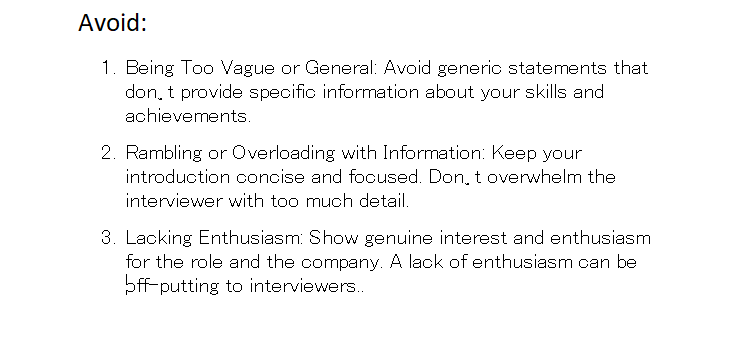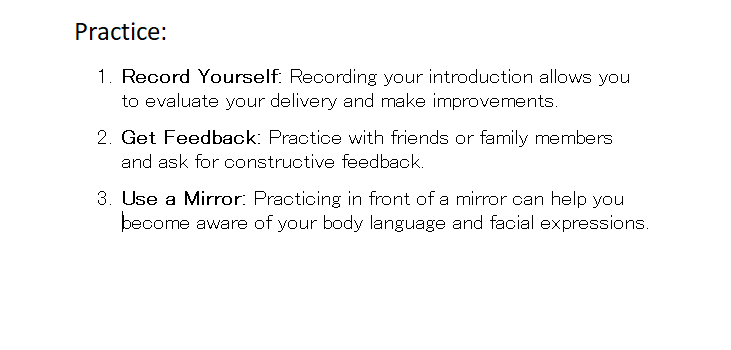In the competitive job market, making a strong first impression is crucial. One of the most critical moments in any job interview is when you introduce yourself. This is your opportunity to set the tone, showcase your confidence, and present your unique value proposition. In this guide, we will explore how to introduce yourself in an interview effectively, ensuring you leave a lasting positive impression on your potential employer.
Understanding the Importance of a Good Introduction
Your introduction in an interview serves as the foundation for the rest of the conversation. It helps establish rapport, demonstrate your communication skills, and highlight your most relevant experiences and qualities. Knowing how to introduce yourself in an interview can be the key to unlocking further opportunities during the interview process.
Preparing Your Introduction
Before you step into the interview room, preparation is essential. Here are some steps to help you craft a compelling introduction:
- Research the Company and Role: Understand the company’s culture, mission, and the specifics of the job you are applying for. Tailoring your introduction to align with the company’s values can make a significant impact.
- Highlight Relevant Experience: Identify the experiences, skills, and accomplishments that are most relevant to the position. Focus on what makes you a unique fit for the role.
- Practice Your Delivery: Rehearse your introduction multiple times. Practicing helps you speak confidently and naturally during the actual interview.
Structure of a Good Introduction
A well-structured introduction typically includes the following components:
- Greeting and Personal Information: Start with a polite greeting and mention your name. A simple “Hello, I’m [Your Name]” sets the stage.
- Brief Professional Background: Provide a concise overview of your professional background, highlighting your most relevant experiences.
- Key Achievements and Skills: Mention specific achievements and skills that are pertinent to the job. Use quantifiable metrics if possible.
- Reason for Interest in the Role: Explain why you are interested in this particular role and how it aligns with your career goals.
- Closing Statement: Conclude with a statement that opens the door for further conversation, such as asking a question or expressing your enthusiasm for the opportunity to discuss your qualifications in more detail.
Read Also:
Example of Introduction
Here is an example of how to introduce yourself in an interview:
“Hello, I’m Jane Smith. I have over five years of experience in digital marketing, with a focus on social media strategy and content creation. In my previous role at XYZ Company, I led a team that increased our social media engagement by 50% and launched several successful campaigns. I’m particularly excited about this role at ABC Corp because I admire your innovative approach to marketing and am eager to contribute to your team’s success.”
Common Mistakes to Avoid
When learning how to introduce yourself in an interview, it’s important to avoid common pitfalls:

Tips for a Memorable Introduction
- Be Authentic: Authenticity is key. Be yourself and let your personality shine through.
- Stay Positive: Maintain a positive tone throughout your introduction. Avoid negative comments about previous employers or experiences.
- Make Eye Contact and Smile: Non-verbal cues such as eye contact and a friendly smile can significantly enhance your introduction.
- Adapt to the Interviewer’s Style: Pay attention to the interviewer’s style and adjust your introduction accordingly. Some interviewers prefer a more formal approach, while others may appreciate a casual tone.
Practicing Your Introduction
Practicing your introduction is crucial to mastering how to introduce yourself in an interview. Here are some tips for effective practice:

Tailoring Your Introduction for Different Situations
Different interview scenarios may require slight adjustments to your introduction. Here’s how to tailor your introduction for various situations:
- Phone Interviews: Focus on your tone of voice and clarity. Since the interviewer can’t see you, your verbal communication skills are even more critical.
- Video Interviews: Ensure your background is professional and free from distractions. Dress appropriately and maintain good eye contact with the camera.
- Panel Interviews: Address each panel member during your introduction and engage with all of them throughout the interview.
Final Thoughts
Mastering how to introduce yourself in an interview is an essential skill that can significantly impact your chances of success. By preparing thoroughly, structuring your introduction effectively, and practicing diligently, you can make a strong and memorable first impression. Remember to stay authentic, positive, and enthusiastic, and tailor your introduction to fit the specific interview scenario. With these tips in mind, you’ll be well-equipped to introduce yourself confidently in any interview setting.
By focusing on the key elements discussed in this guide, you’ll not only learn how to introduce yourself in an interview but also set a solid foundation for the rest of the interview process. Good luck!
Pingback: How to Get an NGO Job in Nigeria - Camgree
Pingback: Common Job Interview Questions and How to Answer Them - Camgree